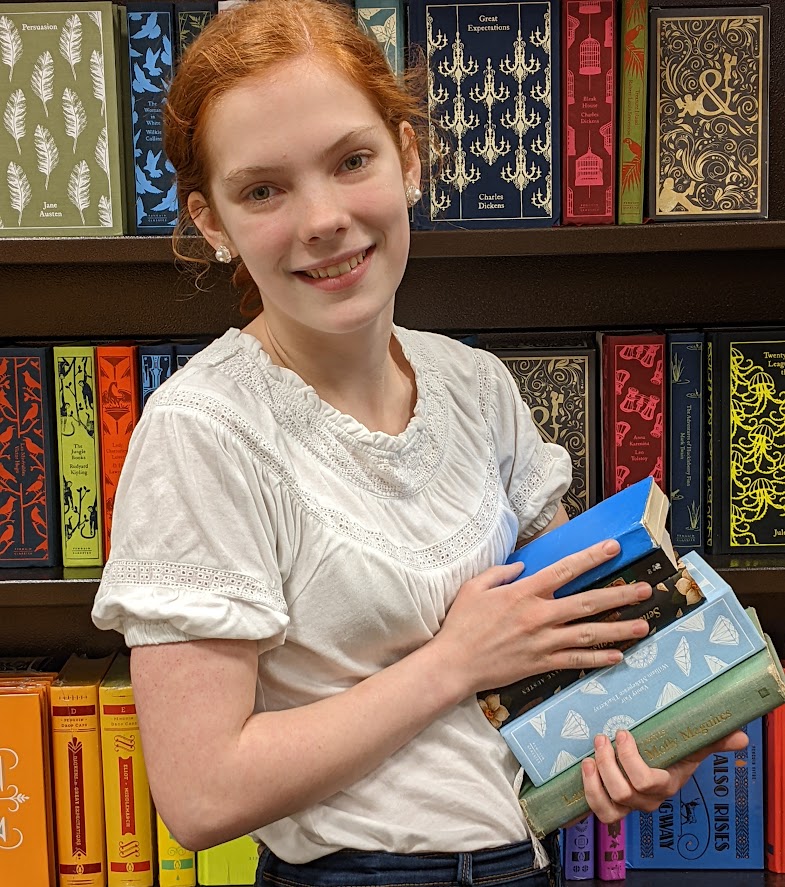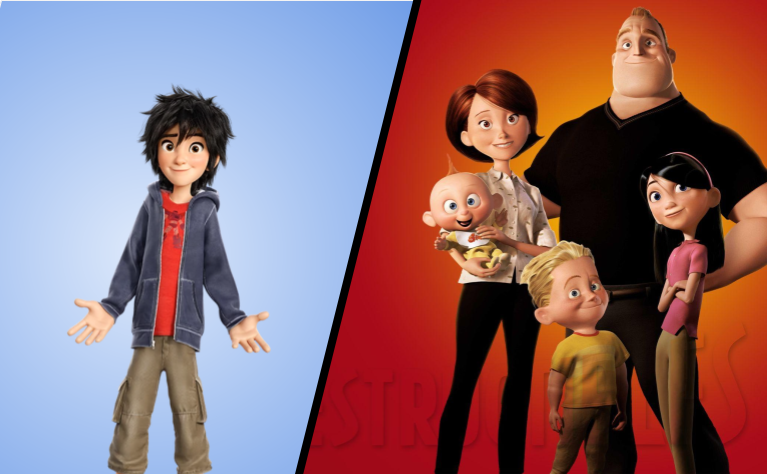Last year, when I was doing research for my first article on Big Hero 6, I came across an article contrasting the movie with The Incredibles. It offered several points that the author believed made The Incredibles a better movie, and one point particularly stood out to me.
While The Incredibles offers character development and growth for every individual in its cast, the side characters in Big Hero 6 are virtually static. They may have changed over the events of the plot, but if they did it isn’t pointed out and definitely doesn’t impact the message of the story. While each of the characters in The Incredibles grew, developed, and were given a moment to do something that matters in the climax, Big Hero 6 revolved entirely around the protagonist’s development, and the conclusion of the movie reflected this with a climax that centered completely around him.
This was pointed out as one of Big Hero 6’s main failures. And it seems to make sense. Just a few months ago we wrote about the impact that having a full cast of developing characters can have on a story. Without that, it seems as though storytellers are missing out on something important — the chance to give each character a moment to shine.
So is that true? Was this author correct in pointing this aspect out as one of the flaws of Big Hero 6? Today, we’ll be looking at Big Hero 6 alongside The Incredibles, to see which one did better with their side-characters.
The Incredibles
In a world of mutants banned by the government, a now-retired superhero known as Bob Parr has settled down, married, and maintains a stable job. Although everything seems as it should be, he secretly suffers from the restriction of his previous identity, Mr. Incredible, and the good he was able to do before the government banned super human activity. He hates the monotony of the day in and day out of work. He hates the futility of the way he spends his days. Most of all, he hates watching people get hurt who he could have helped. So when a shady corporation gives him the chance to do some real superhero work, he jumps at the opportunity.
But things aren’t as ideal as he intended. He decides to keep his decision a secret from his mutant wife, Helen Parr, who is ready to enjoy family life without the dangers of the superhero days now behind both of them. When she realizes the truth about her husband’s activities, she is forced to wrestle with her own desire to protect her family and the ability they all have to protect others in a special way.
Meanwhile, their son, Dash, struggles in school. The restriction of his abilities means he doesn’t have an outlet, leading him to cause trouble in school, use his powers despite his parents’ warnings, and constantly fight with his sister, Violet. At the same time, Violet struggles with making friends in a highschool where she doesn’t fit in and can’t seem to gather the courage to talk to anyone.
They each have their own struggles, flaws, and desires, and throughout the movie, these develop and change. They each have their own relationships — we get conversations between pairs of each of the characters, showing their individual relationships and how each member of the cast develops throughout the story. By the end, each of the characters are radically different than how they started out, and the writers went out of their way to make this clear, ending the movie with Violet asking a boy out, Dash competing in track, and the entire Parr family finally deciding to don masks and face off against a supervillain who bursts onto the scene to cause destruction to the city.
Big Hero 6
Big Hero 6 follows Hiro Hamada’s journey through a futuristic world as he deals with the death of his brother and wrestles with finding purpose in his otherwise directionless life. Along the way, he ends up encountering the man who caused his brother’s death, catapulting into dealing with revenge and healing. Joined by his friends, each equipped with their own powerful technology, Hiro sets out to put a stop to his brother’s killer and make sure that he doesn’t get the chance to hurt anyone else.
Although it is a superhero movie with a whole team of heroes, Big Hero 6 is fundamentally Hiro’s movie. The other character’s don’t have to make the impossible choices he’s faced with, or deal with the grief he feels especially deeply. They don’t have unique relationships with each other. They don’t set out with any noticeable flaws, don’t change throughout the movie, or add anything to the themes or plot. Essentially, they’re there when Hiro needs them. Otherwise, they fade into the background as the movie sets in through his perspective.
The question is: Is that a problem?
Cast Focused Versus Protagonist Focused
The answer is no. Throughout all fiction media, there are two kinds of stories: the ones who focus on a cast of characters and those whose cast support a single character, your protagonist. Both can be done incredibly well, and each comes with their own pros and cons.
Cast-focused stories offer opportunities for multiple views into the same events and plotline. They take ideas and allow each view to offer their own slant to the story. They also allow for deeper themes. Writers can explore multiple perspectives, add deeper nuance, and achieve a greater depth when each of their characters are simultaneously learning different aspects of the same concept.
Meanwhile, protagonist-focused stories support a singular perspective, theme, and viewpoint. In some ways, they are stronger for it. They allow writers (and readers!) to immerse themselves in a single individual’s world. The entire story is filtered through their view, making each emotion, epiphany, and choice more potent, because it matters so much to the one character you are following.
Pick One
The important thing to keep in mind with both of these methods of storytelling is that you have to pick one. You can’t jump between two or remain indecisive.
If you do, some of the issues we’ve addressed earlier on this blog are bound to come up. The Force Awakens was clearly setting up for a cast-focused trilogy, with perspectives from Poe, Finn, and Rey and individual desires, fears, and flaws for each of them. When the writers decided to switch to a dual-perspective story in The Rise of Skywalker, it resulted in a dissatisfied fanbase who felt as though they had been promised more.
They weren’t actually promised more, they were just promised a different kind of story. Make sure you know which kind you want to write from the outset, and you’ll be guaranteed to fulfill your promises to your readers.
Which Should You Pick For Your Story?
The next question is, of course, which type is best for your story?
There are a few things to look at. The very first is that if you have a complex theme, or at least multiple aspects that you plan to explore over a single book, have a story that focuses on the entire cast. Give each of your characters a different side to the same theme that they can explore, and you’ll allow for a fuller, more nuanced version of your theme. Without that, you risk overloading your protagonist with too much to learn in one book. Considering how complicated most themes are, this can result in seeming contradictions, so much nuance that your readers miss your main point, and overall too much of a focus on philosophy, rather than good storytelling.
On the other hand, if you have a good, solid theme that doesn’t need much of an explanation, consider giving your protagonist the only character arc and perspective. You don’t have to focus on the personalities, flaws, and development of the other characters.
Hiro’s story was about revenge and forgiveness. If the writers had included development for Honey Lemon, Gogo, Wasabi, and Fred, their stories could have muddled the clarity of the theme. As it is, Hiro’s journey is strong enough to stand on its own. The other cast members don’t need radical development or even much to them besides interesting personalities to be able to support Hiro along his journey.
The other things to consider are more according to personal preference. The cast size and perspective count is ultimately up to you, as a writer, so focus on what you like best. Cast-focused stories tend to be a bit more complicated, as they are often stretched between multiple perspectives and character arcs, so they can be more time-consuming as a writer. On the other hand, protagonist-focused stories can seem a bit simplistic and straightforward at times. Personally, I find myself alternating between writing books with multi-perspective, complicated stories and simpler, single-perspective protagonist-focused works with more straight-forward themes.
Ultimately, it’s up to you. You’re the author after all, and both styles of storytelling have created well-loved and best-selling novels. Neither way is better than the other. So pick a focus, choose a theme that fits it, and write a story that fulfills its promises!



Let us know in the comments:
Have you noticed both kinds of storytelling? Which do you personally prefer?


Hi! My name is Mara, and I’m a Christian artist, violinist, and blogger. I remember the day that I decided that I would learn something new about what makes a good story from every book I picked up — whether it was good, bad, or a mixture of both. I use this blog as a way of sharing some of the tips and tricks I’ve learned, and highlight which books, cartoons, and movies have taught me the most about writing an awesome story.


Very helpful for me right now with my WIP, as I’ve been debating who I should focus on with *so many characters*. I will probably go the BH6 route.
As a side note, the BH6 series had episodes focusing on the other teammates, even giving them a bit more development. However, it was not much development.
Still worth the watch though!
Yay!
I love categorizing books this way, because it can help me focus on what matters for my particular story. Glad this is working for you, too! (And I love watching the progression of this story through the Story Fortress’ comments section!!)